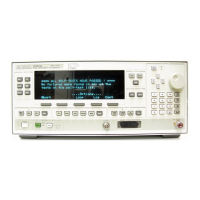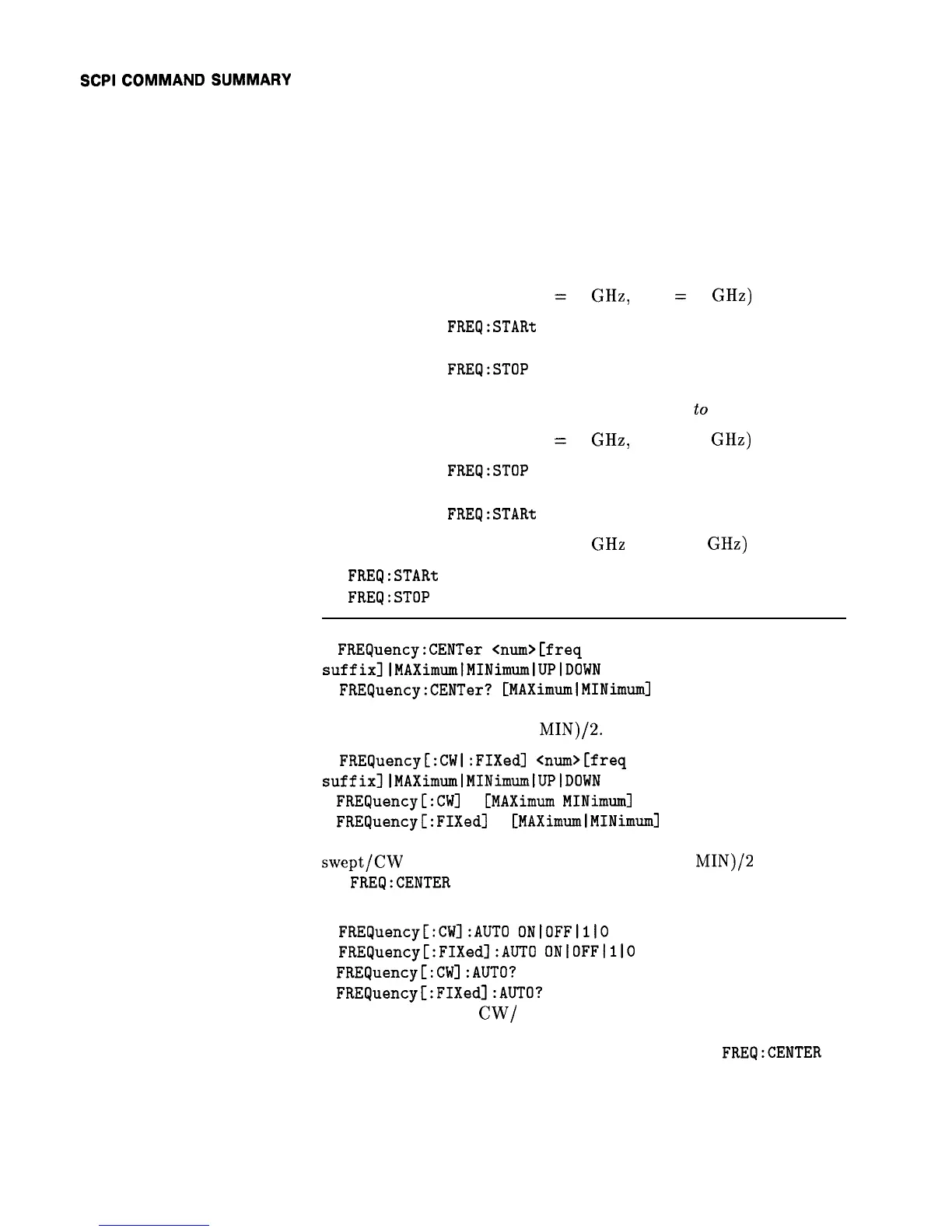requested value. The start/stop frequencies are updated to reflect the
changes based on the coupling equations.
The swept CW generator uses “bumping” to move unspecified
frequency parameters, but if the final value of any of the frequency
headers is the result of bumping, then an error is generated since
the user is not getting what was specified. This means, to guarantee
sequence independence requires sending the frequency pairs in a
single message.
Example 1: (present state start
=
5 GHz, stop
=
6 GHz)
FREq:STARt
20 GHZ
an error results since the
stop frequency is bumped.
FRElJ:STOP
22 GHZ
the final sweep does not
generate an error
(20 to 22).
Example 2: (present state start
=
5 GHz, stop = 6 GHz)
FREq:STOP
22 GHZ
no error is generated,
start frequency is unchanged.
FREq:STARt
20 GHZ
still no error.
Example 3: (present state start = 5 GHz stop = 6 GHz)
FREQ:STARt
20 GHZ;STOP 22 GHZ
both are fine,
FREq:STOP
22 GHZ;STARt 20 GHZ
no errors.
l
FREQuency:CENTer
Cnum>[freq
suffix]lMAXimumlMINimumlUPlDOWN
l
FREQuency:CENTer?
[MAXimumlMINimuml
Sets and queries the center frequency.
The *RST value is (MAX +
MIN)/2.
l
FREquency[:CWl:FIXed]
Cnum>[freq
suffix]lMAXimumlMINimumlUPlDOWN
l
FREquency[:CWl
?
[MAXimum
I
MINimumI
l
FREquency[:FIXed]
?
[MAXimumlMINimuml
Sets and queries the CW frequency. This does not change the
swept/CW
mode switch.
*RST value is (MAX +
MIN)/2
.
See
FREQ:CENTER
for more information.
l
FREquency[:CW]:AUTO
ONlOFFlllO
l
FREQuency[:FIXed]:AUTO
ONIOFFllIO
l
FREQuency[:CWl:AUTO?
l
FREQuency[:FIXed]:AUTO?
Sets and queries the
CW/
center frequency coupling switch. This
switch keeps the two functions coupled together when ON. Changing
one of them, changes both.
*RST setting is
OFF. See
FREQ:CENTER
for more information.
S-30 Operating and Programming Reference

